|
 





Accessories
Page 5 of 6
<< 1 .
2
. 3 .
4 .
5 . 6
>>
Used Google
translator
Microcassette (Steno-cassette) to a tape
recorder Grundig DeJUR Execumate Stenorette. On this
tape you can record one track for 30 minutes at a speed
of 2.38 cm / sec. The cartridge design does not allow to
curl up and make a second track record, but it has a
built-in tape counter. The counter has a complex
structure, it uses a few gears and worm screw. Almost
all body parts and plastic tapes. Dimensions 65 x 45 x
10 mm, Weight 23 г. gears and screw visible on the
enlarged photographs. Also in the cassette has built-in
contacts, which are likely to trigger hitchhiking. They
are closed with metallic coating on the tape at the end
of winding. Contact withdrawn on the underside of the
tape, and when it is inserted, pressed to the
appropriate contacts of the recorder. In my recorder
when playing hitchhiking does not work, perhaps it is
defective. However, when writing, when the tape ends,
the speaker produces a loud sound of high tone. May
serve as contacts for the inclusion of the warning
signal.
Information from Wikipedia: (Steno-Cassette) - format a
tape for my tape recorder magnetic recording of sound,
proposed by Grundig in 1971 (sales in 1973). In the
1970's and early 1980's steno-cassette spread to Germany
and became the subject of a national standard DIN 32750
(1985). In 2008, the tapes and the recorders of this
format continue to be sold under the brand Grundig
Stenorette and positioned as a high-quality and
expensive solution "for business" (the cost of the
simplest recorders from 200 euros). In 1995, the same
Grundig brought to market, in addition to the family
Stenorette, a family of microcassette recorders, and a
catalog company in 2008 represented the family for three
recorders - two analog and digital.
Сервис онлайн-записи на собственном Telegram-боте
Попробуйте сервис онлайн-записи VisitTime на основе вашего собственного Telegram-бота:
— Разгрузит мастера, специалиста или компанию;
— Позволит гибко управлять расписанием и загрузкой;
— Разошлет оповещения о новых услугах или акциях;
— Позволит принять оплату на карту/кошелек/счет;
— Позволит записываться на групповые и персональные посещения;
— Поможет получить от клиента отзывы о визите к вам;
— Включает в себя сервис чаевых.
Для новых пользователей первый месяц бесплатно.
Зарегистрироваться в сервисе
Photos can be enlarged
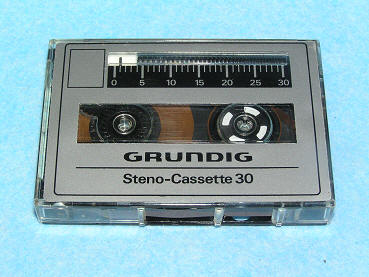
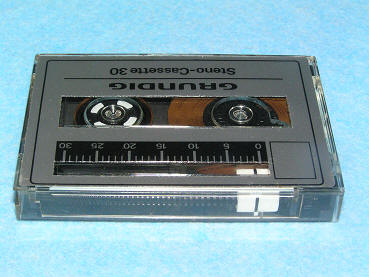 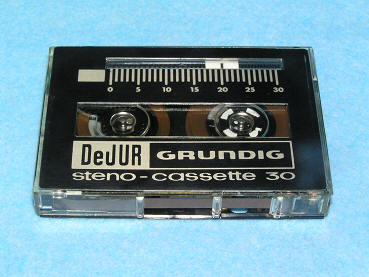
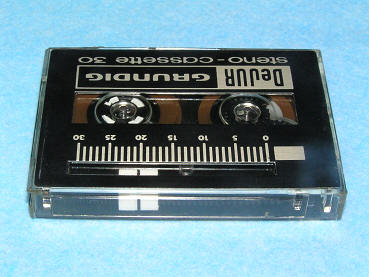
In the photo on the left you can compare
the sizes of cassettes of different formats. In the
photo on the right contacts are visible in the lower
right corner of the tape.
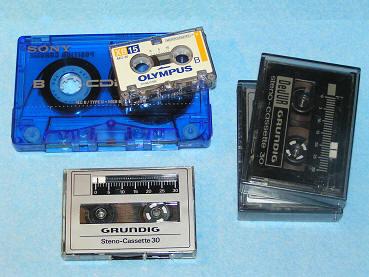

The original headset in a plastic box to
the recorder
Grundig DeJUR Execumate Stenorette. They
were made in the early 70's.
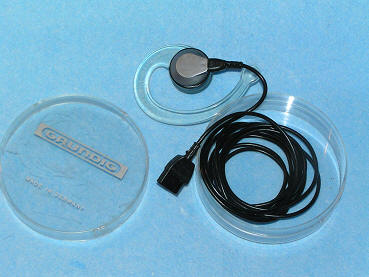
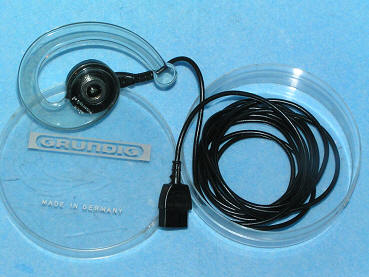
Set of reels with a
ribbon in the original plastic box to the recorder
Stuzzi Memocord 304 B. At the coil diameter of 42 mm can
be made up to 1 hour recording, four tracks of 15
minutes. Tape width 1/4 inches.
Every 6 cm on the tape marked digital tags (three-digit
number), that help find the right place record.
They were made in the
60-ies in Austria.
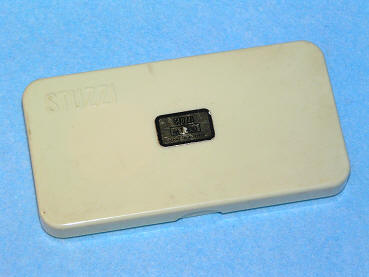
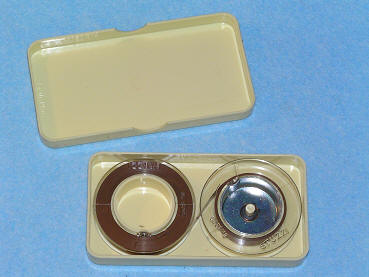 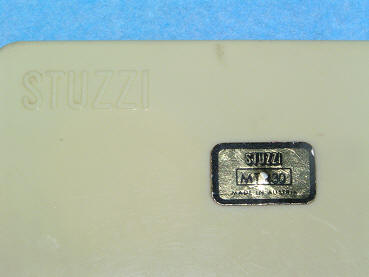
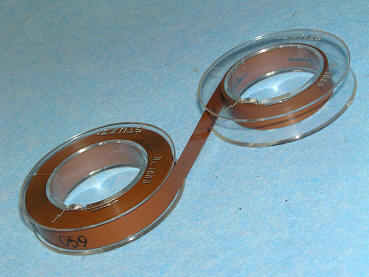
Original set of batteries for portable
wire recorders Minifon
Mi51 and Minifon P55.
These recorders are made in Germany in the 50's, and
their electronics were collected on tubes. Accordingly,
the required three-voltage, 12 v engine, 1,5 v for
filament lamps, and the anode voltage 30 v. In the photo
on the left of the original battery is 12 v, its size is
89 x 33 x 33 mm, weight 150 g. On the right battery 29 v
type RM-413. Its dimensions are 62 x 26 x 16 mm, weight
60 g.
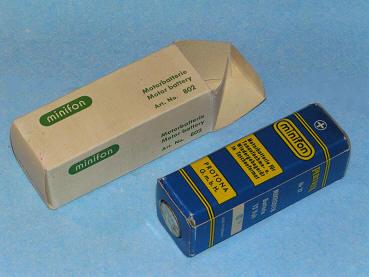
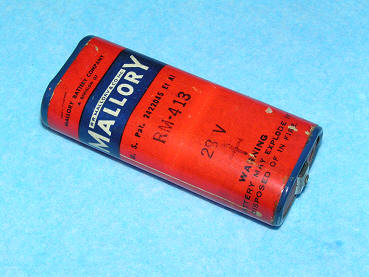
In the photo at the bottom of a mercury
battery 1,5 v - "Mercury Energizer". Its shape and
dimensions are the same as in modern AA batteries, but
the polarity is reversed.
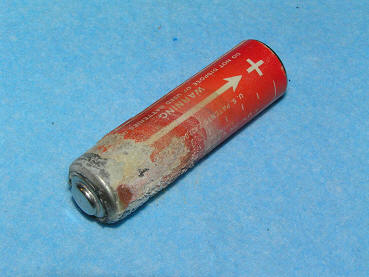
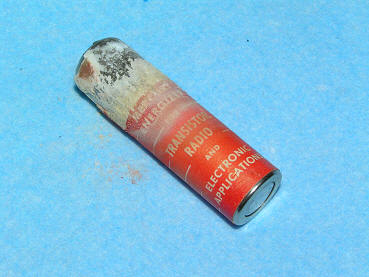
Headset TM-2M "Octave".
Made in 1969 in the USSR, winding resistance 60 ohms.
This headset I got bundled with the Soviet dictaphone
Electron 52D. These
recorders were made in 1969 in Poltava, and are almost
an exact copy of Japanese
Tinico.
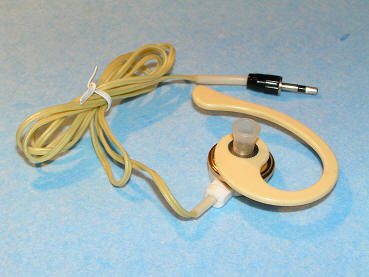

Audio cassettes Elcaset.
This format was proposed by Sony in 1976 as an
alternative to high-quality compact cassette. Dimensions
152 x 106 x 18 mm. Weight 145 grams without the box. In
the cassette tape is used width 6.35 mm (1 / 4 inch),
both in reel to reel tape recorders.
The photo on the left a
new, unopened tape. Right open.

 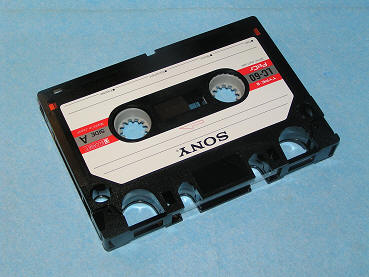
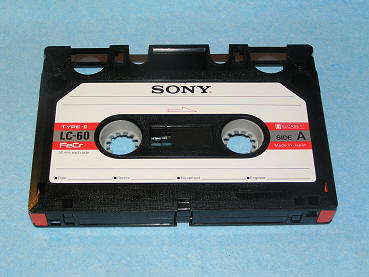
The photo on the right you can compare
the sizes Elcaset and compact cassettes.
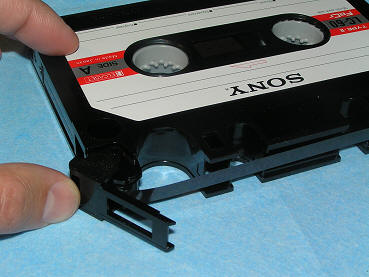
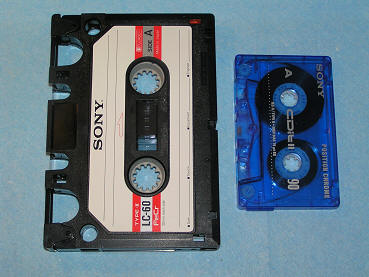
Instruction
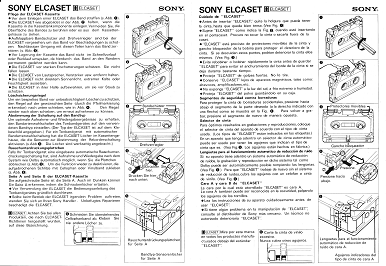
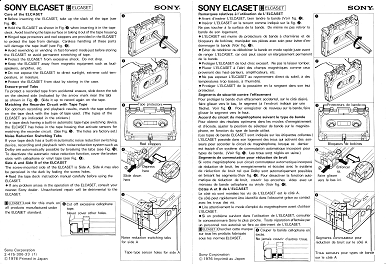
Page 5 of 6
<< 1 .
2
. 3 .
4 .
5 . 6
>>

 |

![]()
![]()
![]()
![]()
![]()
![]()
![]()


























